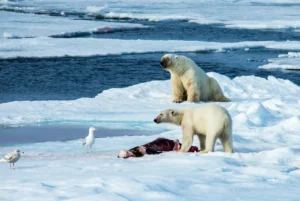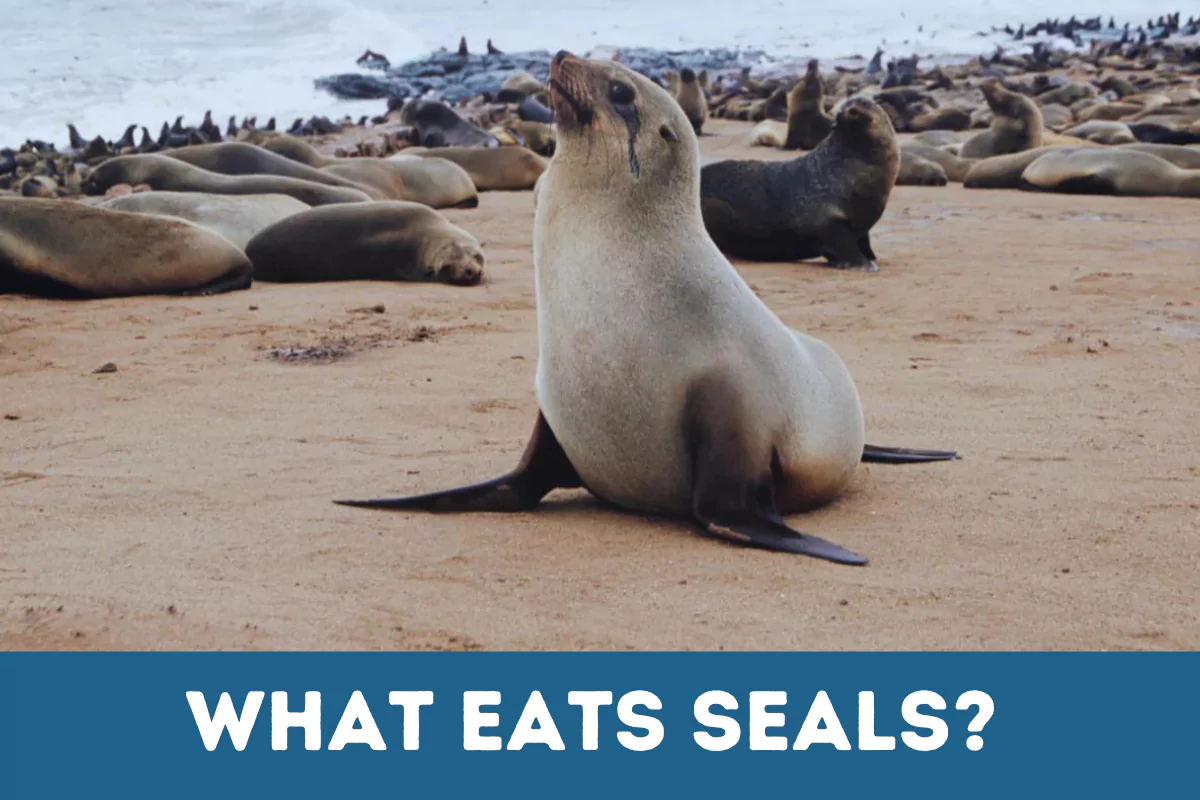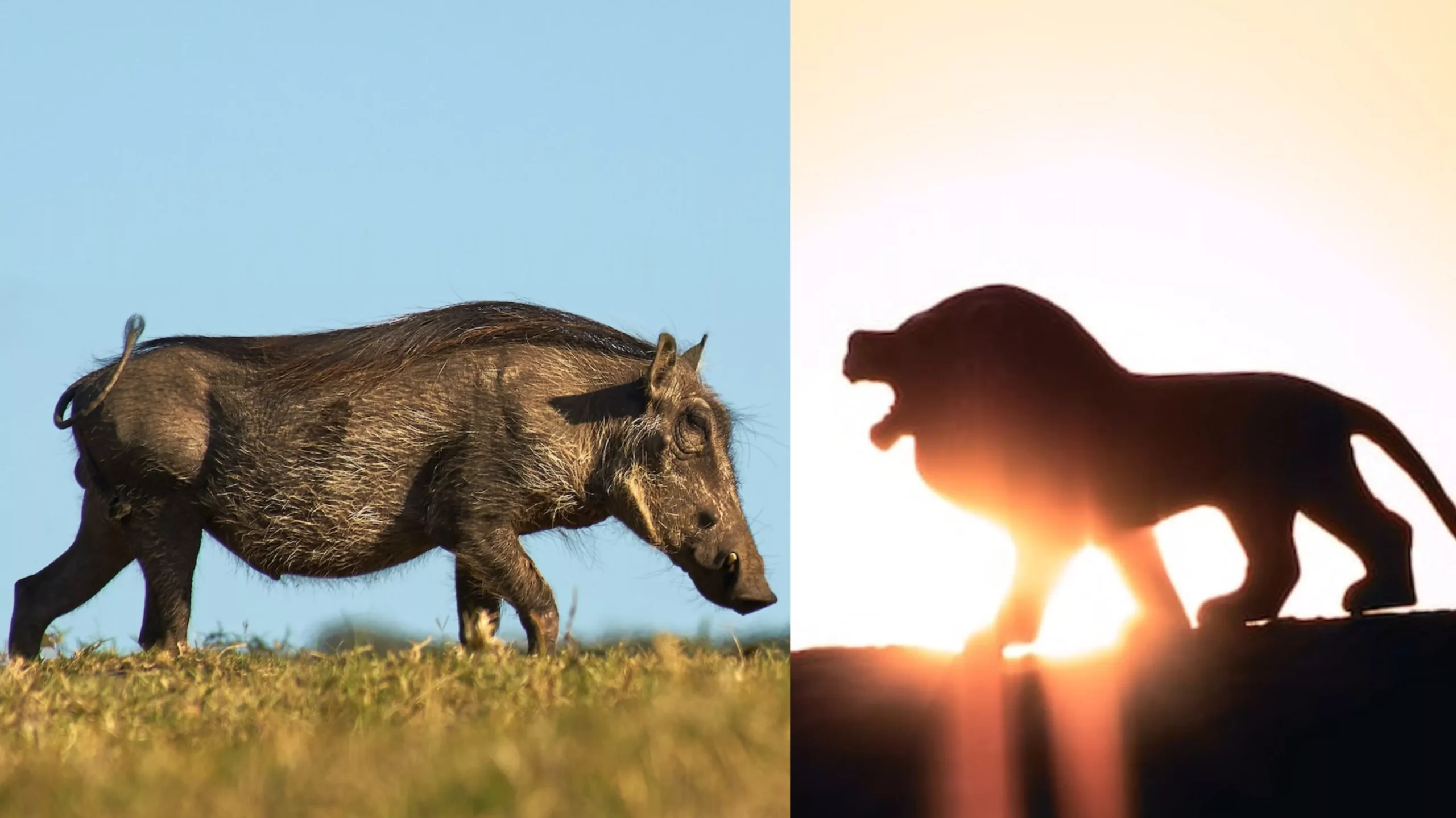Seals, unique-looking mammals, are semi-aquatic mammals that mostly live in our planet’s arctic and antarctic regions. These fascinating marine mammals play a crucial role in maintaining the delicate balance of our ecosystems.
However, as with any animal, seals are part of a food chain, and several predators rely on them for sustenance. From fierce underwater hunters to agile airborne predators, various animals have honed their skills to make seals their preferred meal.
In this article, we will explore the diverse range of creatures that consider seals an irresistible delicacy and uncover the fascinating ways they pursue their prey in some of the planet’s most unforgiving environments.
What Animals Eat Seals?
In the wild, seals have many predators, including killer whales (orcas), sharks, polar bears, arctic wolves, leopard seals, and humans. They are preyed on by various animals because they don’t have a proper defense mechanism against these natural predators.
Seals are marine mammals and belong to the taxonomic clade “Pinnipedia.” Currently, there are 33 surviving species of seals in the world, in which most species live away from the equator in cooler climates.
Seals spread across seas and oceans all over the world, from the frigid Arctic and Antarctic regions to the equatorial Pacific Ocean. But many animals prey on them because they are clumsy on land, and going back into the water is only their way of protection from land predators.
Let’s see some of the Seal Predators:
1) Orcas (Killer Whales):
Killer whales (aka orcas) are the leading predators of seals, and they mainly target baby seals as they are more vulnerable because they do not have swimming ability like adult seals. Hence they are easier to catch. But this does not mean adult seals are safe from orcas.
Orcas are larger than seals making it easier to hunt and kill them. Orcas hunt seals when they are in the water. They do this by ambushing seals and applying different deceitful tactics to capture them. They usually hunt in packs, targeting isolated, weak, or young seals.
Typically, orcas chase their prey until it gets tired; if the prey is a fast swimmer, they will surround it from different directions and trap it. And if the prey seems difficult to catch, they pretend to retreat and then ambush it when the prey least expects it and let it down its guard.

If it is a baby seal, the whale will just swallow it whole, but if the seal is large, it will be torn and shredded to pieces before being eaten. Orcas are known to toss and flip seals up in the air using their tail. They may also kill a seal by ramming and crushing its thoracic cavity using their flukes.
Orcas that live in colder waters have developed a unique hunting technique to catch seals by creating waves with their tails and washing them off ice floes.
Orcas are notorious for their hunting and predation skills that they have been linked to wiping off an entire population of sea lions and fur seals in the northern Pacific and southern Alaska during the 1960s and 70s.
Also, they have been blamed for eliminating an entire population of sea otters in Aleutians and thereby causing a decline of stellar sea lions by almost 80 %.
The main advantage for orcas is that they hunt in packs of at least a dozen and often attack from several directions ((similar to lions), so they can easily wipe out an entire pack of seals.
Also Read: Do Whales Eat Seals?
2) Sharks:
Like killer whales, sharks also mainly target vulnerable and young seals. But sharks use a different technique to hunt seals. Large sharks, such as great whites and tiger sharks, are known to hunt seals. They also like to swallow their food whole, so pups are the best choice for this reason.
Unlike orcas, which directly hunt their prey, sharks usually sneak and attack suddenly on seals. They swim deep below the seals and attack by rushing vertically. This sudden vertical rush attack technique has a success rate of about 48%.

Also, sharks don’t hunt in groups; they are solitary hunters. Their mere presence in the habitat has a significant impact on seals. Their behavior, migration pattern, and population dynamics are greatly affected in shark-prone areas.
With sharks, mothers with dependent pups have a huge risk as they have to choose between risking their lives in search of food or remaining close enough to protect their young while also ensuring their own survival.
Generally, sharks take advantage of low light conditions, which occur due to the optical scattering of light through water by camouflaging themselves. Hence, we see that most shark attacks happen during the first two hours of sunrise, as the light penetration is minimal during those hours.
But sharks’ stealth and ambush strategy will be compromised when the light penetration increases during the daytime. So, seals can easily escape unless they are severely injured in the attack. Also, there are chances of a seal injuring a shark if it detects it beforehand.
3) Polar Bears:
Polar bears (Ursus maritimus) are the biggest and primary land predators of seals. The majority of polar bears inhabit regions north of the Arctic Circle, extending all the way to the North Pole while also being present in areas south of the Arctic Circle.
Polar bears are one of the deadliest arctic animals with a big appetite. They are incredibly strong and quite different from other bears. They require a large number of proteins and survive to survive and maintain their body heat in freezing weather.

Thus, polar bears are almost exclusively carnivorous. Their food habits vary greatly depending on the region where they inhabit; for example, in northern Canada, polar bears are known to feed primarily on ringed seals, while in Alaska, they tend to prefer bearded seals.
Interesting Fact: Polar bears have a huge appetite, and their stomach accounts for almost 10-20% of their total body weight.
Still hunting is the polar bears’ technique, and they patiently wait for the seal to come out of the water to breathe. When the seal approaches the surface, they will quickly grab it and drag it away from the water.
They stalk their prey near breathing holes and use powerful swipes of their paws to capture potential meals. Sometimes, polar bears also use their sense of smell to find seal birth dens, and once located, they penetrate through the den’s roof to catch the seal.
Note: The slow melt of the polar ice caps in recent years continues to isolate the bears’ habitat from seals, threatening their ability to find prey, such as harp seals.
Also Read: Do Dolphins Eat Seals?
4) Arctic Wolves:
Arctic wolves, which reside in icy environments, are predominantly carnivorous. They require a diet that is rich in fat to survive in extreme weather conditions. And seals provide adequate fat for these animals to live in cold environments.
Both arctic wolves and polar bears show similar traits in their hunting abilities and techniques; they are both patient hunters with great predation skills. But the difference is that arctic wolves are social animals and hunt in packs, whereas polar bear hunt alone.

While arctic wolves stalk and pounce on the prey when the time is ripe, it is not uncommon to see an arctic wolf chasing prey and testing its weakness. They use their incredible abilities of smell and sound to locate their prey.
Research shows that hunting weak seals is actually benefitting the ecosystem, as it improves their overall health by eliminating the unhealthy and allowing only the healthy to reproduce.
Like orcas, when hunting large animals such as seals, the wolf pack will separate and surround the prey from all directions. While the lead wolf goes for the animal’s shoulder or neck, the remaining wolves also attack from the front and back until the prey subdues.
However, hunting an adult seal is not an easy task for wolves, considering the weight and size differences. While an adult elephant weighs up to 5000 pounds, an adult Arctic wolf only weighs around 150 pounds, which is why they prefer to prey upon pups and weak seals.
5) Leopard Seals:
Seals have internal threats, too, from other large species, such as leopard seals.
Leopard seals, the third largest seal species, are known to predate and eat other seals, including crabeater and Weddell.
They are extremely vicious animals and trick younger seals by using different techniques to catch them. They are known to play with their food, often spending hours playing a cat-and-mouse style game with seal pups before catching and killing them.

Leopard seals are solitary hunters and are ranked very high in the food chain. Orcas are the only natural predators of them. Ultimately, this predator-prey relationship helps maintain healthy marine ecosystems by controlling populations.
6) Humans:
Humans are also one of the largest predators of seals and the biggest threat to their survival. Seals are hunted for their meat, oil, and pelts to the point of near extinction during the 19th and 20th centuries.
Sadly, human hunting far exceeds those of other natural predators, even surpassing the likes of killer whales.
Although the hunting of seals is regulated now, it is not entirely banned. Canada allows seal hunting in an annual hunting event where hunters hunt thousands of seals, mostly harper seals.

Note: It is said that every year, Canadians kill around 280,000 seals during the seal hunt that is held in March-May.
Apart from hunting seals actively, other human activities, such as the emission of greenhouse gases, are the main reason for climatical change. This leads to the melting of ice in polar regions and eventually impacts seals, as sea ice is critical for seals to raise their pups.
Also, entangled in man-made debris, especially from the fishing industry, is another threat to seals, especially to young seals.
Factors such as excessive hunting in the same waters where seals source their food interrupt their food chain. Seals have to compete with fishing boats for their food.
Seals who can’t get enough food to survive may die of hunger. Even if they don’t die, weak seals will become more vulnerable to other natural predators like killer whales.
Also Read: Do Whales Mate For Life?
What Eats Leopard Seals?
Leopard seals (Hydrurga leptonyx), also referred to as the sea leopards, are the second largest species of seal in the Antarctic (next to the southern elephant seal). While they feed a wide range of prey, including cephalopods, other pinnipeds, krill, birds, and fish. Their only natural predator is the killer whale (Orca).
Orcas prey on leopard seals; in fact, they prey on pretty much whatever they want so long as it is in (or sometimes right next to) the ocean. Orcas’ range overlaps with that of the leopard seal, so pinniped is on the menu.
What Do Seals Eat?
Seals are large semi-aquatic mammals with winged feet that reside in coastal waters and rocky shores. These carnivorous animals mainly live in the Arctic and Antarctic regions, and their primary prey includes fish, crabs, squid, and krill.
However, larger seal species, such as leopard seals, feed on penguins, seabirds, and other seals.
Final Words:
Though seals are carnivorous and are predators themselves, they have their predators too, even on both land and sea. Especially pups are popular targets for most predators as they are more vulnerable and thus easy to catch.
Apart from their natural predators, humans are the biggest threat to seals, and the melting of ice in polar areas greatly threatens their existence.
Stringent measures need to be taken to protect the seals from human predation and to protect their habitats.
FAQ:
- What Whales Eat Seals?
Even though they are not whales technically, killer whales are apex predators and one of the biggest predators of seals.
- What Sharks Eat Seals?
Among sharks, large sharks that reside in cold waters, such as tiger sharks and great white sharks, eat pinnipeds like sea lions and seals as part of their menu.







